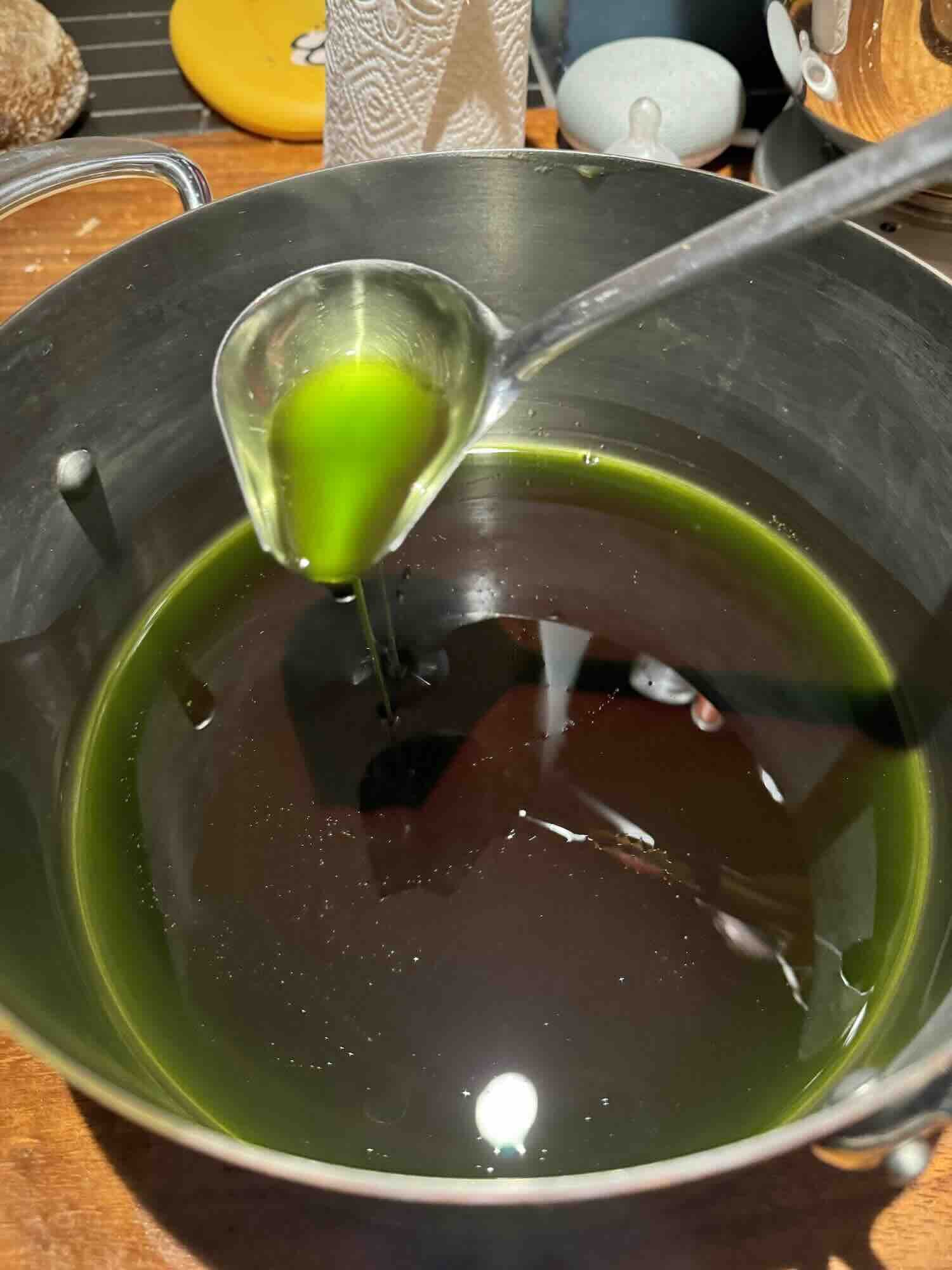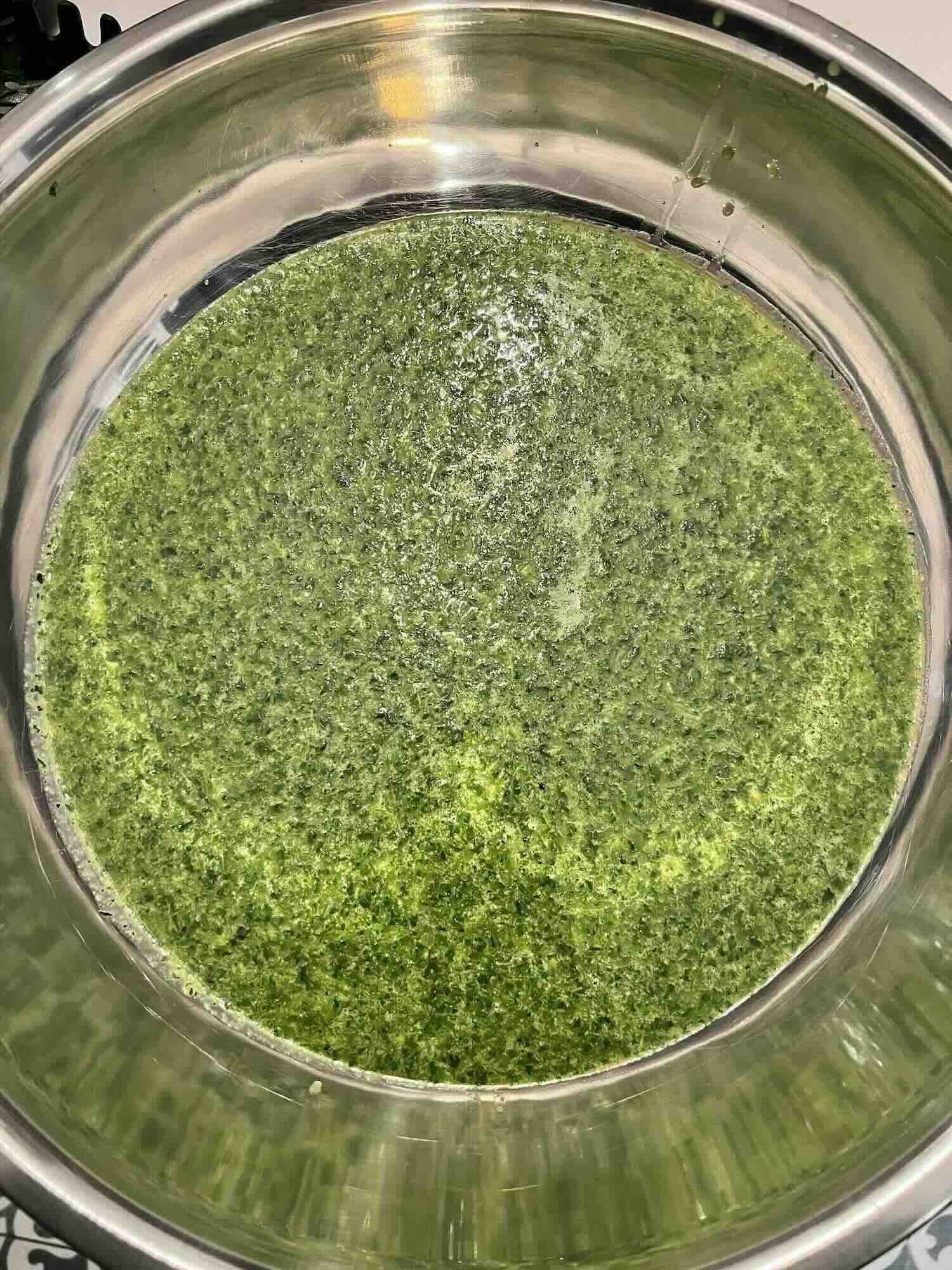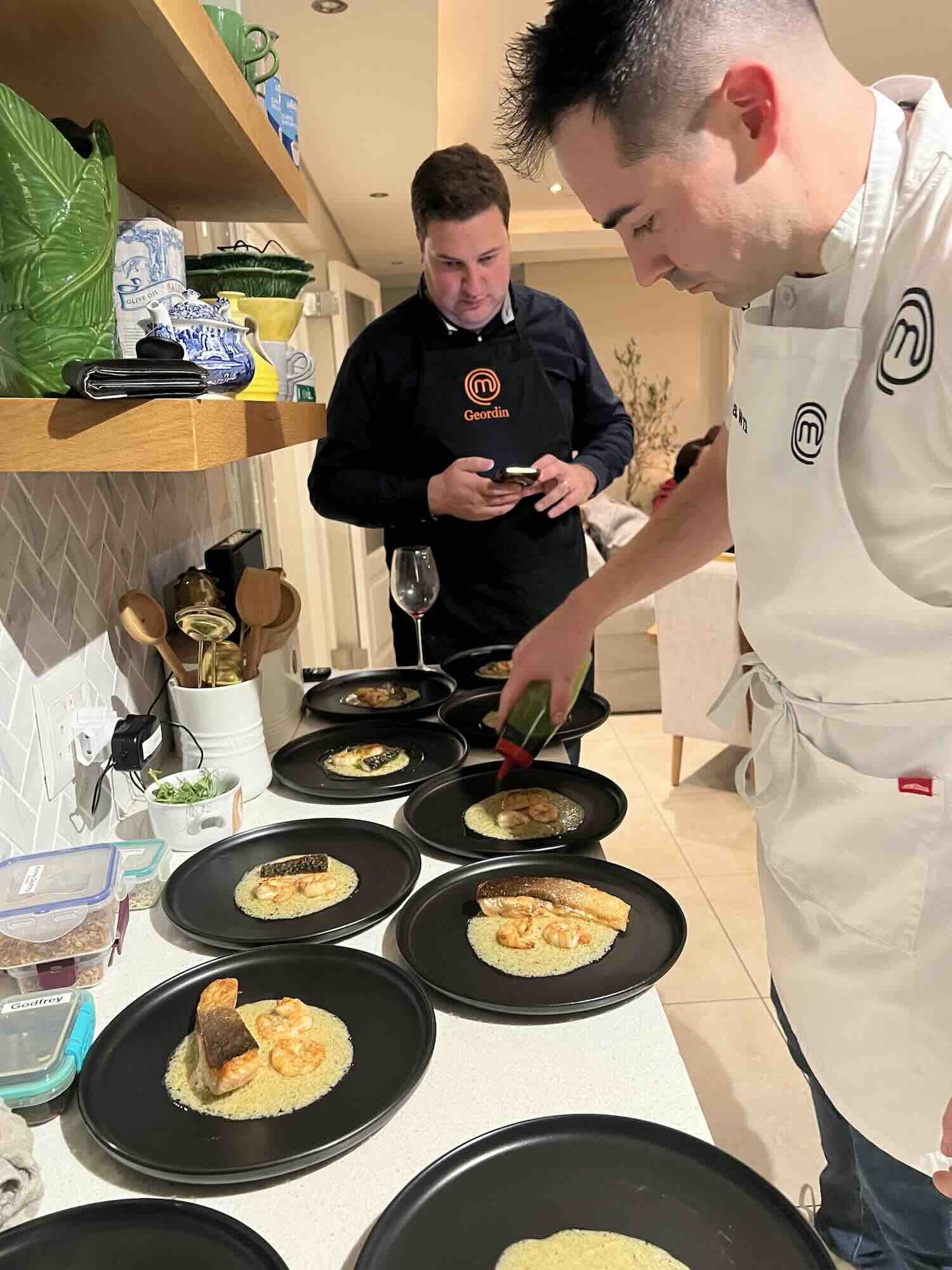How to make your own Basil Oil (step-by-step)
How to make your own Basil Oil
I love basil oil as it’s so versatile. It is not just about the great flavour, but it adds a nice colour to the dish as well.
To get the bright green colour, it is important to use fresh herbs. The cooking method is important too,
It pairs with most Italian pasta dishes (even pizzas too!), it goes well with fish and can even be added to Asian dishes.
How to use Basil Oil
To give you some examples of dishes where I have used basil oil:
I’ve added it to the Mosaic Truffle Fillet with Ravioli which I served at an Italian Food, Wine and Music pairing at a pop-up restaurant at Feastival such as
When I cooked HOME.BAO’s Frozen Dumplings and Potstickers and added a side of Egg Fried Rice, with some Grilled Corn and Mange Tout, Boerewors Bites from Pick n Pay I also ended with a drizzle of Basil Oil.
And last but not least, earlier this year I made this pan seared line fish with smoked aioli and grilled prawns on an artichoke and lemon cream which I finished off with a basil oil drizzle as you can see below (under the watchful eye of Cape Town’s mayor Geordin Hill-Lewis).
Ingredients to make Basil Oil
1 to 2 cups of fresh basil
1 cup of extra-virgin olive oil or go half/half with grapeseed oil and extra-virgin olive oil
Ice blocks
Equipment needed to make Basil Oil
Large pan
Bowl to make an ice bath (sounds fancy but it’s just water and ice blocks)
Paper towel
Blender (I use the Taurus Foodie, which is a great piece of equipment that can do a lot more than just blending, but for this recipe specifically a regular blender will also work).
Sieve
Cheesecloth
Squeeze bottle
How to Make your own Basil Oil (step-by-step)
Put a large pot of water on the stove and bring to a boil.
Wash the basil, then tear the leaves from the stem.
The more basil you use, the stronger the flavour will be.Blanch the basil leaves in the pot of boiling water for about 10 seconds. This sets the colour. Remove and immediately place into an ice bath to stop the cooking process.
When the blanched basil leaves have cooled down, squeeze them to remove the excess moisture. You can press the leaves between paper towels to ensure it is as dry as possible: water detracts from the flavour, and oil and water don’t mix.
Put the dry leaves in a blender.
Now add the oil. As mentioned you can either use only extra virgin olive oil or mix it with a more neutral-tasting oil like grapeseed oil. This because a good quality extra virgin olive oil has a strong flavour of its own, and it can overpower the basil flavour.
If you’re using half/half, add the grapeseed oil first, blend, then add the olive oil and blend again.
Pour the oil into an airtight container and leave in the fridge for a minimum of eight hours. This infuses it with flavour.
Take the oil out of the fridge and allow to come back to room temperature.
You may find that the oil is a bit cloudy - don’t stress. It will eventually settle.
Line a sieve with a cheesecloth on top of a large pan or container (don’t forget this step - I have made the gut-wrenching mistake of pouring my strained basil oil straight into the sink!
Straining the oil will make it clear and bright green in colour. If you find that it is still looking cloudy, too many of the solids may have come through and you will need to strain it a second time through the cheesecloth.
When you’ve poured everything through, you may squeeze the cheesecloth gently to extract all of the oil.
And there you have it - it’s a bit of time and effort, but you can make a large quantity in one go and you can keep the basil oil in the refrigerator for about a month. I prefer to keep mine in a small squeeze bottle in the door of my fridge, as it reminds me to use it as a finishing touch to many different dishes, adding both some colour and flavour to the plate.
Enjoy! Please tag me on Instagram if you’ve made your own basil oil using this recipe, I’d love to see it!
About Shawn Godfrey
Photo credit: Niki M Photography
Shawn Godfrey is an entrepreneur based in Cape Town, South Africa. After the Covid-19 lockdown saw his business in financial distress, cooking was the creative outlet that helped to keep him sane. To keep track of his recipes, and encourage friends and families to join him, he starts his instagram account The Roasted Dad.
Fast-forward to late 2021 - on a whim Shawn (encouraged by his wife Lianne) enters MasterChef South Africa. It is a crazy time of life: running a 200 people business and struggling to keep it profitable, two small children with a third on the way, and about to move into a new house. But when Shawn gets selected to be one of the 20 contestants participating in the fourth season of MasterChef South Africa, he decides to go all in. Leaving his 7-month-pregnant wife to look after their then three and one-year-old children, he battles it out and comes back home five weeks later with the trophy and a million rand prize money in his pocket.
It all started with an Instagram account, but The Roasted Dad is so much more now. Shawn has stayed his entrepreneurial self and whilst he hosts Private Dinner Parties and Cook-with-Me Demos, does Restaurant Take-Overs, he still runs the lighting company and several other businesses.
On his blog, Shawn shares Restaurant Reviews and Accommodation Reviews, and gives an insight into the wild and wonderful life he leads together with his wife Lianne, and their three children Aiden (6), Olivia (4) and Harvey (2).
Sign up to the newsletter below to be kept up to date with events, new recipes and reviews, or contact Shawn to chat about recipe creation, restaurant takeovers and public speaking events.










